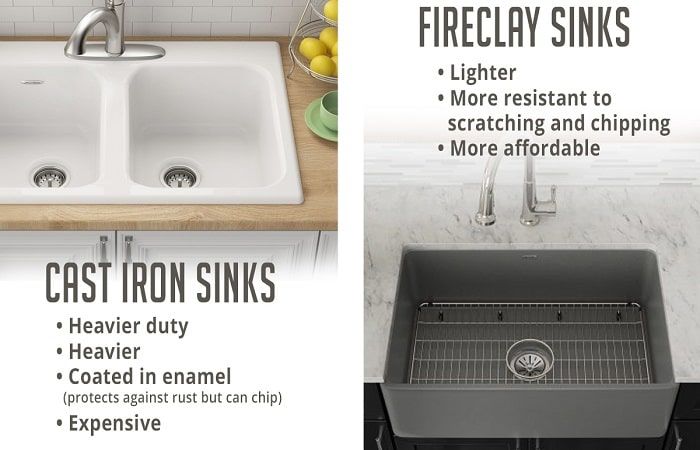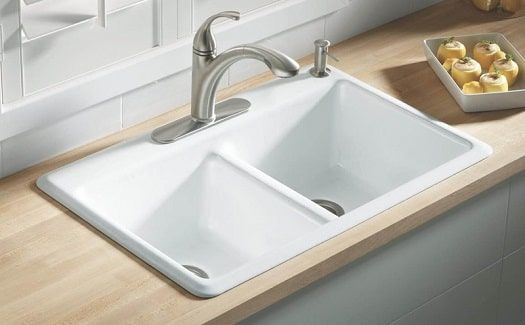Fireclay and cast iron are two of the more popular materials in making sinks. Specifically, farmhouse apron front sinks are known for using these materials. Both sink materials are classic choices, bringing a sense of charm and calm to a home. Fireclay and cast iron are stylish yet sturdy. Understanding the pros and cons of each will help you choose between a fireclay vs. cast iron sink.

What Is a Fireclay Sink?
Fireclay sinks are made from a clay and enamel blend shaped and fired at extreme temperatures. This process makes the clay extraordinarily durable and more resistant to scratch or chip than a standard porcelain sink. Where cast iron can rust when the protective enamel is stripped away, the fireclay will not rust.Fireclay is relatively light. Much lighter than cast iron (at an average of 100 pounds). Homeowners should consider mounting a supportive undermount system to hold the weight of heavier sinks.
One advantage is it's easy to mold fireclay into any mold or shape you choose. In rare cases, the handcrafted designs create minor inconsistencies that cause water to pool in the sink. Their strength and durability make them low maintenance. They also tend to be more affordable than cast iron sinks, but they are more expensive when compared to porcelain sinks.
A difficult challenge with fireclay sinks is their possibility of cracks. Due to the method of creation, sometimes there are flaws. Imperfections in the clay before entering the kiln (the oven used to fire the clay) can result in hidden cracks that can worsen over time. The manufacturing is so standardized for our big brands that this is of little concern (and that's what warranties are for).
What Is a Cast Iron Sink?
 Cast iron is a durable and heavy-duty material designed for heavy-duty usage.
Cast iron is a durable and heavy-duty material designed for heavy-duty usage. It’s coated in enamel for a shiny and bright finish. While protective, this enamel can wear down or chip away if handled carelessly, allowing rust to tarnish the iron. Against the dark backdrop of the iron, the orange-red rust stands out prominently. Despite its challenges, if adequately cared for, cast iron sinks can last for decades in a home.
A second problem can arise due to the cast iron sink’s shear weight, which averages around 150 pounds. Its weight can become a limiting factor when installing the sink or moving it around. In some cases, a homeowner may need to install an under-mount support to bear the weight of the cast iron sink.
Another drawback is the price. They are relatively expensive, cost more to ship, and this causes homeowners to rethink their desire for a cast iron sink.
Difference Between Cast Iron vs. Fireclay Sinks
A cast iron sink's biggest advantage is that it's incredibly durable. The biggest disadvantages are weight, cost, and susceptibility to certain types of tarnishing (rust if the enamel is chipped).Fireclay sinks are also very durable but not quite in the same class. They are lighter, more affordable, and more resistant to scuffing and other minor imperfections.



